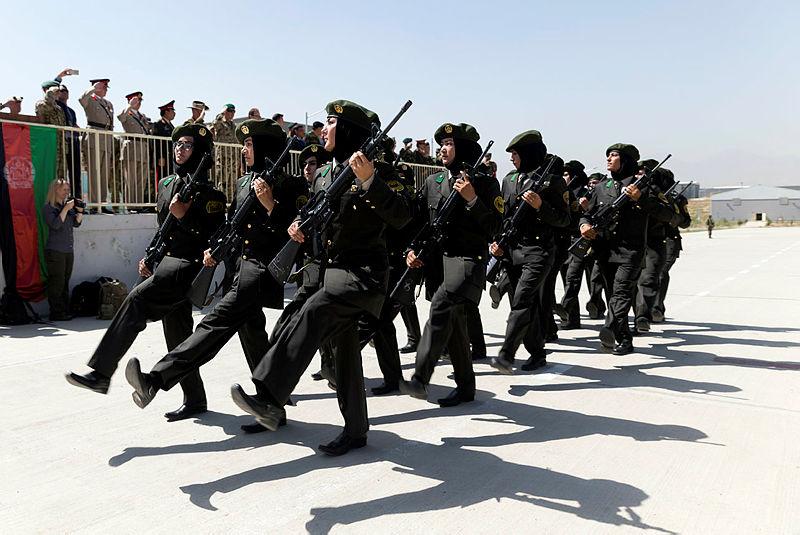The imperative of integrating a gendered perspective into military operations
Posted By Susan Hutchinson and Nathan Bradney on February 20, 2019 @ 13:01
Understanding how societal conflict and instability affect men and women is essential to the development and implementation of lasting peaceful solutions. While men do most of the fighting, it is women who maintain social cohesion, live through conflict in greater numbers, and bear much of the burden of reconciliation and reconstruction. UN Secretary General António Guterres agrees, stating in his October 2018 report on women, peace and security [1] (WPS) that ‘analysis undertaken in conflict-affected settings that lacks a gender lens is partial and can result in flawed analysis and planning, which can have a detrimental and long-term impact on the whole of society’.
When Islamic State–affiliated groups seized parts of Marawi in the southern Philippines in 2017, within weeks more than 290,000 civilians were displaced. Government support was limited and appreciation of the gendered aspects of the displaced population was lacking. Myriad issues arose, among them a spike in gender-based violence in camps. With little opportunity for justice, resolution mechanisms degraded to include the forced marriage of minors.
Many of those displaced by the violence in Marawi have since returned home, but some still harbour resentment against the government and security forces for their lack of support and security. It is these types of grievances that are manipulated by groups like IS for radicalisation and recruitment.
Using foreign military power successfully to enhance population security in conflict areas relies on timely, accurate and culturally nuanced intelligence. Intervening forces are increasingly looked to to set the conditions for lasting security, which involves engaging the entire population. Essential to this process is a comprehensive understanding of culture and gender, derived from intelligence and operations functions that appreciate the gendered implications of peace and security activities. Underpinning this approach is the mainstreaming of WPS in the culture of security forces. That work often spearheaded by gender advisers.
Research from Sweden [2] shows that gender advisers are most effective in military operations when they’re involved in internal organisational activities such as operational planning. The US Naval Institute recently published an article [3] outlining how actively thinking about gender in the intelligence cycle ‘is critical to developing a complete operational picture’. Yet American research [4] has shown that ‘[s]ecurity assessments, plans, and analysis appear to exclude serious considerations of women’s contributions to community resilience, sustainable peace, and local security … [I]t appears as though, when it comes to gender, security assistance has not been informed by an accurate understanding of the operating environment.’
A recent analysis of the Rohingya refugee crisis [5] shows what can be learned about a conflict when a gender perspective is applied, driving an international legal response and shaping humanitarian efforts. Quantitative analysis [6] of the population of pregnant women and new mothers in the refugee camps—who are represented in far higher numbers than in the wider community—showed that sexual and gender-based violence has been used as both a weapon of war and a tool for ethnic cleansing. The analysis of gendered data provides insights that unveil breaches of international law and drive legal, policy and humanitarian action.
The need for a gendered understanding has become increasingly apparent throughout the development of the UN Security Council resolutions on WPS.
Resolutions 1889, 2106, 2122 and 2242 note [7] the lack of quality information and analysis on the impact of armed conflict on women and girls, as well as the requirement to ensure their physical security and participation in decision-making and post-conflict planning. The resolutions address these issues by asking member states to collect, analyse and systematically assess [8] gendered data—not only in places of conflict and instability, but also across the areas of radicalisation, terrorism and violent extremism—to support evidence-based responses and criminal investigations. By requesting a flow of reliable information to support the security of women and girls in armed conflict, the Security Council has established the precursors for gendered intelligence.
In Australia, one way to deepen our implementation of the WPS agenda would be to conduct regular gender audits of intelligence reports, initially to understand the extent to which we have a gendered understanding of conflict, and then to track progress. The restructuring of the Australian intelligence community and elevation of the Office of National Assessments to a supervisory function presents an opportunity for refining gendered intelligence training, development and application across the intelligence agencies.
But a gender perspective also needs to shape our highest level operational planning and design. Indeed, the National Security Committee of Cabinet can do more to include gender expertise in its conceptual decisions on Australia’s peace and security operations. For example, a gender-informed concept of operations in the fight against Islamic State in Syria and Iraq would have better managed the thousands of Yazidi sex slaves [9] held captive in Raqqa [10] and Mosul, and helped ensure the protection of crime scenes [11] such as the mass graves of Yazidis killed in northern Iraq.
As Australia moves to develop its second national action plan on WPS, our intelligence organisations need to take on a greater responsibility for implementing the WPS agenda. A gendered understanding of conflict and instability will enable the Australian defence and strategic communities to provide responses that will lead to the most sustainable and equitable outcomes, in line with our obligations under international law.
Article printed from The Strategist: https://aspistrategist.ru
URL to article: /the-imperative-of-integrating-a-gendered-perspective-into-military-operations/
URLs in this post:
[1] October 2018 report on women, peace and security: https://undocs.org/S/2018/900
[2] Research from Sweden: https://www.palgrave.com/gp/book/9781137385048
[3] article: https://www.usni.org/magazines/proceedings/2018-02/planners-need-take-gender-account
[4] research: https://usnwc.edu/Portals/0/News%20and%20Events/Women%20Peace%20and%20Security/2015_WPS_Working_Papers.pdf
[5] analysis of the Rohingya refugee crisis: http://www.broadagenda.com.au/home/rohingya-crisis-the-hidden-truth-about-women-as-weapons-of-war/
[6] Quantitative analysis: http://www.tandfonline.com/doi/full/10.1080/10357718.2017.1402291
[7] note: http://unscr.com/en/resolutions/doc/2122
[8] to collect, analyse and systematically assess: http://unscr.com/en/resolutions/doc/2242
[9] better managed the thousands of Yazidi sex slaves: https://theconversation.com/war-crime-deliberations-in-iraq-and-syria-must-be-mindful-of-violence-against-women-66972
[10] Raqqa: /theres-one-battle-raqqa/
[11] ensure the protection of crime scenes: https://www.hrw.org/news/2016/01/30/iraq-protect-mass-graves
Click here to print.
